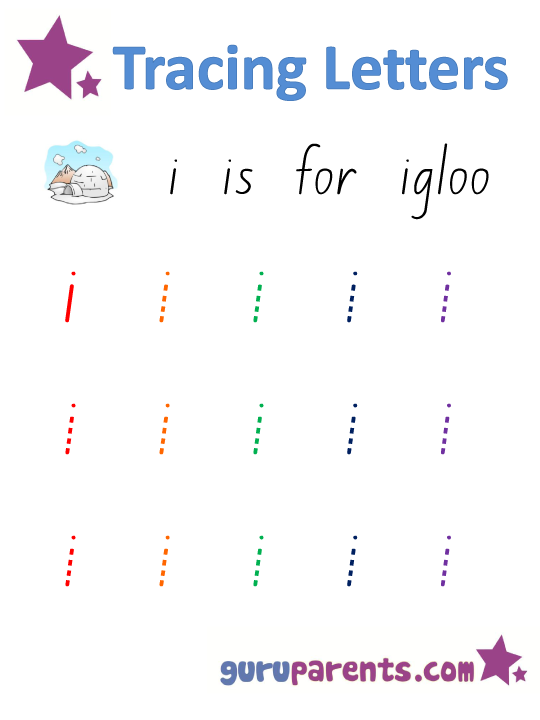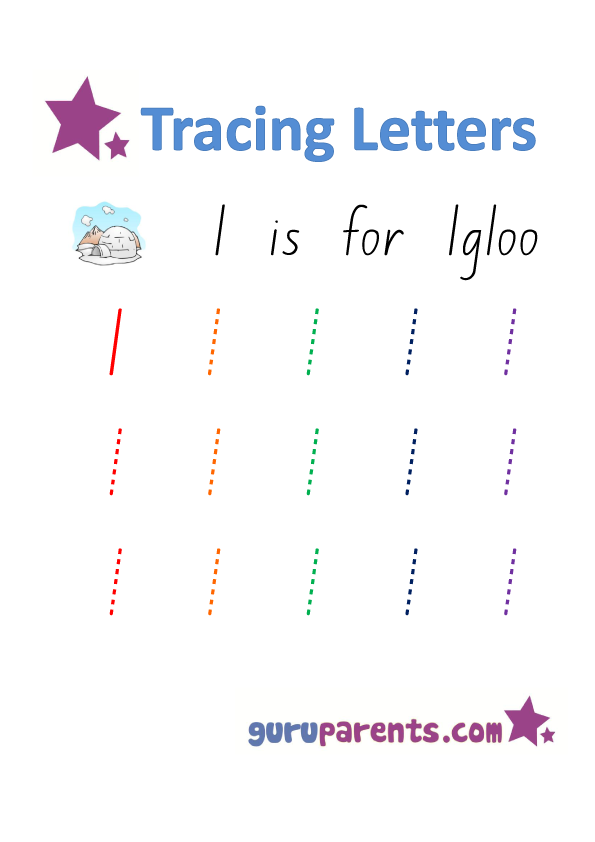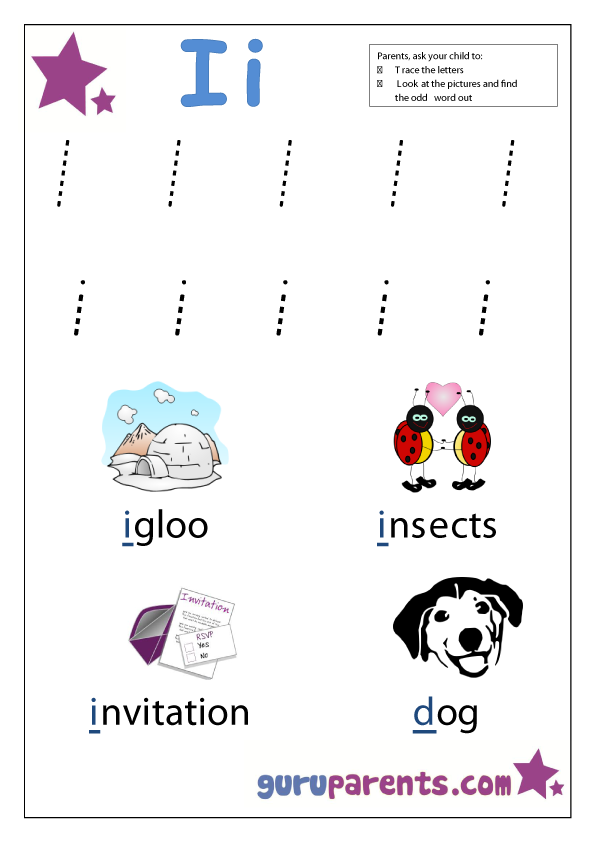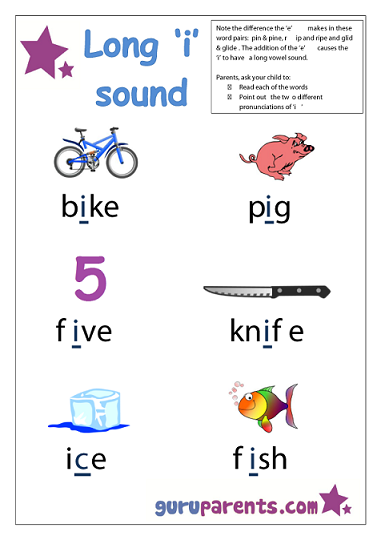Worksheets
Click here to download all Letter I Worksheets
In a nutshell
The letter i is the fifth most commonly used letter in English. It is pronounced in two main ways – the short ‘i’ sound in ‘big’ and the long ‘i’ sound in ‘bike’.
Pronunciation
There are some guidelines you can give your child as to how ‘i’ will be pronounced. However, many of the ‘rules’ have so many exceptions it’s debateable whether they are worth learning at all.
The two rules for ‘i’ that are almost always followed – and therefore are worth knowing, are:
- When ‘i’ is followed by a consonant and then an e, it takes a long ‘i’ sound (for example, ‘bike’ and ‘write’)
- When ‘i’ is followed by ‘gh’, it also takes the long sound, (for example, ‘night’, and ‘light’)
Because of your child’s existing grasp of spoken English, they should (with occasional assistance) be able to work out the correct way to read ‘i’ in most other instances. For example, they will soon realize that the ‘i’ in the word I’m takes the long sound – simply because they know how to say the word.
If your child is learning English as a second language they may find it a bit harder – because they will not instinctively know how to say as many words. Therefore, regular reading (and regular exposure to correctly spoken English via television, radio and the internet) is even more important.
Interactive guide for the short ‘i’
This is a neat little presentation that introduces your child to the short ‘i’ sound and reinforces the way that the capital and lower case ‘i’ look – Click here>>.
Interactive guide for the long ‘i’
This is an interactive short story featuring the long ‘i’ sound. Encourage your child to read it themselves and to click on any words they need help with – Click here>>.
‘I’ as a pronoun
Although in text messages it may be okay to use the lowercase ‘i’ when talking about yourself (for example, ‘i feel gr8 today’), it is never acceptable to do this in more formal writing. Despite this, many children aged 10 or 11 (or even older!) use the lower case ‘i’ for the personal pronoun all the time. This feature of a child’s writing tends to scream out to the reader that ‘i am not a very good writer!’ so make sure your child learns how to do it the right way! Here is a short clip to help you do this.
If English is your child’s second language
Some new speakers of English have difficulty in pronouncing the ‘i’ sound correctly. A common problem is to say ‘i’ with an ‘ee’ sound – therefore a word such as ‘did’ will sound more like ‘deed’. The following podcast takes you through how to pronounce ‘i’ correctly and avoid this mistake – Click here>>.
Obscure fact
Do you know that the dot in the lower case letter i is called a tittle?
Capital ‘i’ or Lower case ‘l’?
The way that capital ‘i’ is written can cause young readers some confusion. When it is written as ‘I’ it is clear, but it is often written as ‘l’ – which is hard to distinguish from the lowercase ‘l’. You may wish to point this out to your child so they can correctly recognize capital ‘i’ and lower case ‘l’ regardless of font.
‘I Spy’ words
‘I spy with my little eye, something beginning with…’ is a great game to play to reinforce the sound that a letter makes and it can be a fun game to kill some time – for example on a long car trip.
Here is a selection of short words starting with ‘i’ for you to use (there are not very many!):
ice, ink, iron, island, ice cream, insect, iguana, ibis
The Letter I Worksheets
Tracing Letters – I is for Igloo
This letter i worksheet gives your child lots of opportunities to practice writing capital I.
Tracing Letters – i is for igloo
This letter i worksheet focuses on the lower case letter i.
This worksheet gives your child an introduction to the sound that ‘i’ makes, and also allows them to practice writing the capital and lower case letter i.
One of the signs of a reader who is progressing beyond the beginner level is one who can see a word such as ‘slide’ and read it correctly first go – that is, to realize it rhymes with ‘ride’ and not ‘rid’. This letter i worksheet is designed to help your child progress towards this point.
<<Previous letterNext letter>>
Back to preschool letter worksheets from letter i worksheets




